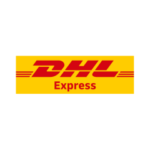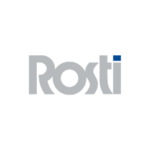“Continuous improvement of a process is essential for success”: every person involved in the organisation of work in manufacturing companies has come across this statement at least once. The implementation of Kaizen and the resulting positive revolution only confirm the validity of this thought. Let us consider: what might the process of calculating the Total Manufacturing Cost, or TMC, look like using this idea? Is it possible to use the PDCA model for this purpose?
TMC and selection of production technology
In many cases, the same finished or semi-finished product can be manufactured in several ways in the same organisation. The changes usually involve the use of different routes or substitutes of raw materials. Deciding which of the available technologies is optimal for the fulfilment of the order is quite a challenge. One of the main factors influencing the final choice is the value of the TMC. The TMC defines all potential costs directly and indirectly connected with manufacturing a product. In order to determine it, dedicated modules/applications are used, which allow the simulation of the TMC. However, reliable calculation of manufacturing costs requires a broader approach to the issue and implementation of the idea of continuous improvement of this process throughout the company.
TMC calculation: where to start?
The problem arises when the data on which the calculation is to be based either do not fully reflect the subsequent manufacturing process or are not available. In this case, the calculation of the TMC relies on percentage coefficients for the individual cost centres. This increases the risk that the calculation will be underestimated or overestimated. The first step to improve the process should, therefore, be the refinement/creation of an adequate technological database for a reliable TMC simulation. This will reduce the gap.
MES: what does it have to do with the TMC?
The stage of manufacturing is, additionally, a very important point in the process of improving the TMC. Information collected in the MES class systems regarding the actual course of the manufacturing process is an excellent basis for analysing and comparing the information collected with the assumptions made for the calculation of the TMC. An increased number of components damaged during manufacturing or faster wear of a mould than assumed at the design stage will significantly influence the costs of manufacturing one piece of a finished product. All information gathered at this stage will constitute the basis for updating the TMC previously prepared or the starting point for a more precise calculation of subsequent products. Moreover, it will clearly indicate places where the assumptions do not coincide with the observation (manufacturing), locating areas of potential process optimisation.
In my professional career, I have more than once had heated discussions with the purchasing department on the merits of introducing substitutes for raw materials. I have proved in these discussions that apparent savings due to the purchase of a cheaper raw material do not always contribute to a reduction in the manufacturing costs of the finished product. I encountered a case in which the use of a different, “cheaper” raw material resulted in more frequent quality defects in finished products. It was also possible to observe increased labour intensity of processing, as a consequence of which, despite using a less expensive material, the final manufacturing costs increased twofold.
Production planning: the impact on the TMC
The production planning process itself influences the occurrence of differences in TMCs too. An example perfectly illustrating this relationship is the fact that the basic technological route will not always be the optimal choice for the manufacturing of a product. In the case of significant workloads, it may become necessary to use alternative resources. They are characterised by a higher manufacturing cost per unit, but ensure timely shipment of the order and, thus, prevent contractual penalties and loss of customer confidence. Note, however, that the use of an alternative technology will change the TMC assumed initially. The new TMC will take into account other resources, with a different manufacturing cost.
TMC in Kaizen
In my opinion, the above method fits perfectly with the concept of continuous improvement and the process approach to calculating the TMC using the PDCA cycle, where the individual steps of the process correspond to the subsequent steps on the Deming Wheel.
However, this requires tailor-made IT solutions that allow efficient TMC simulations during design and planning. Besides, they will enable the collection of real data from the manufacturing process and further comparison of information about initial, planned and inventory TMC. All this will translate into process improvement, and the effects of such actions will be felt in many areas of the company. This will narrow the gap resulting from the uncertainty of purely theoretical preparation of the TMC. The “do it right and let them manage this on production” approach will also cease to be justified.
Mateusz Bireta
product manager eq system
Have you got any comments or questions? Contact the author of the article via LinkedIn



































